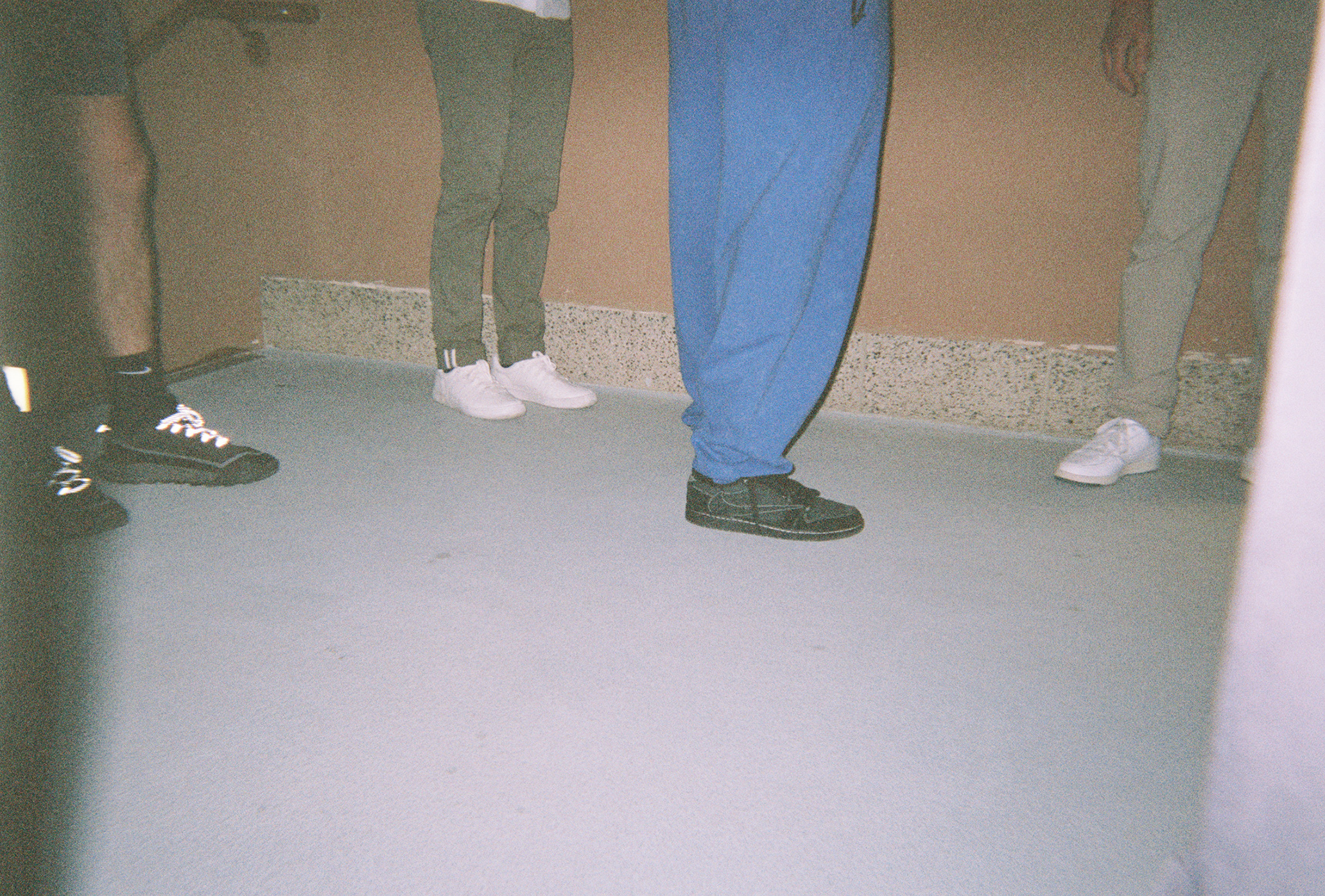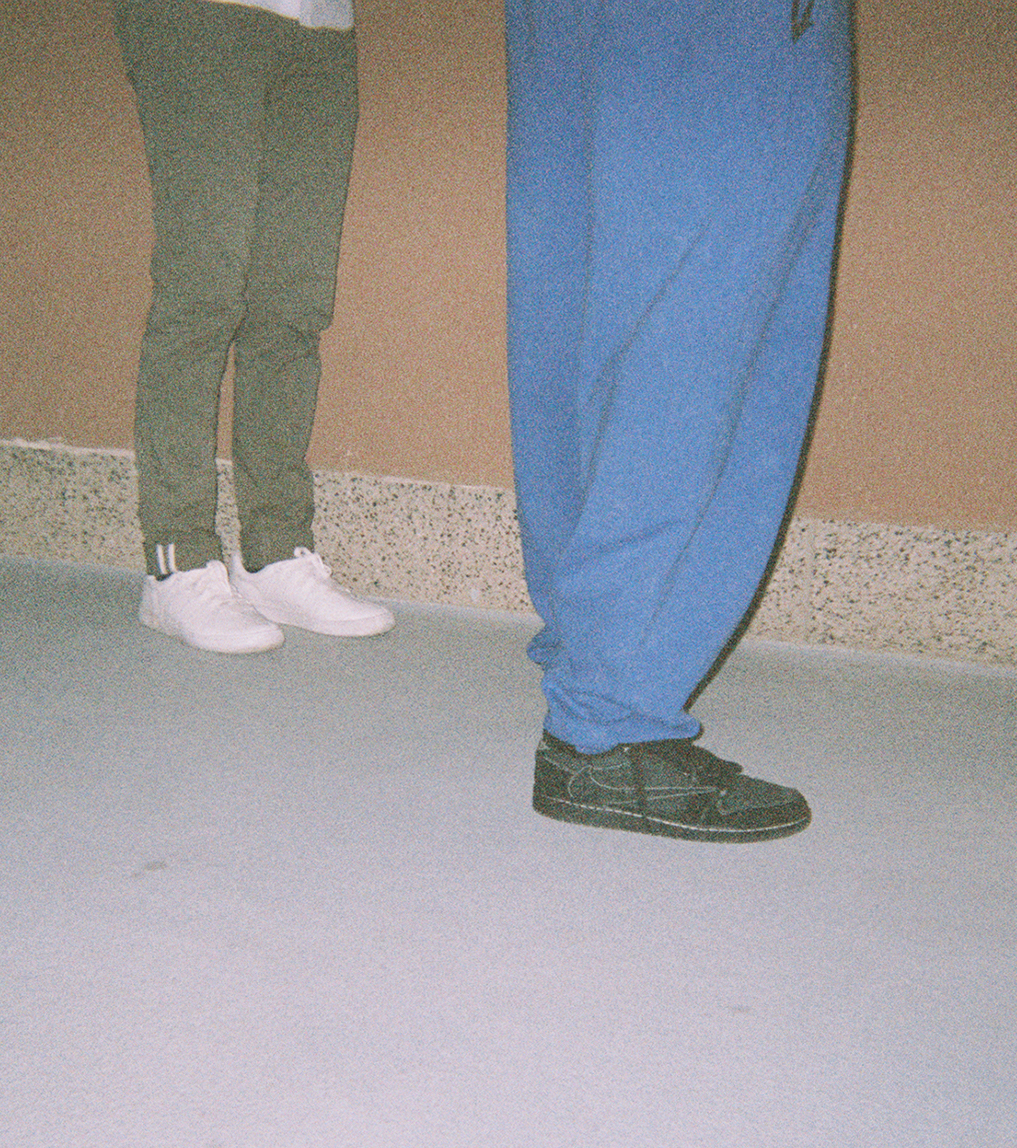Down in the Flood
Down in the Flood
The long and watery road to tennis paradise.
The long and watery road to tennis paradise.
By Joel DruckerMarch 13, 2024
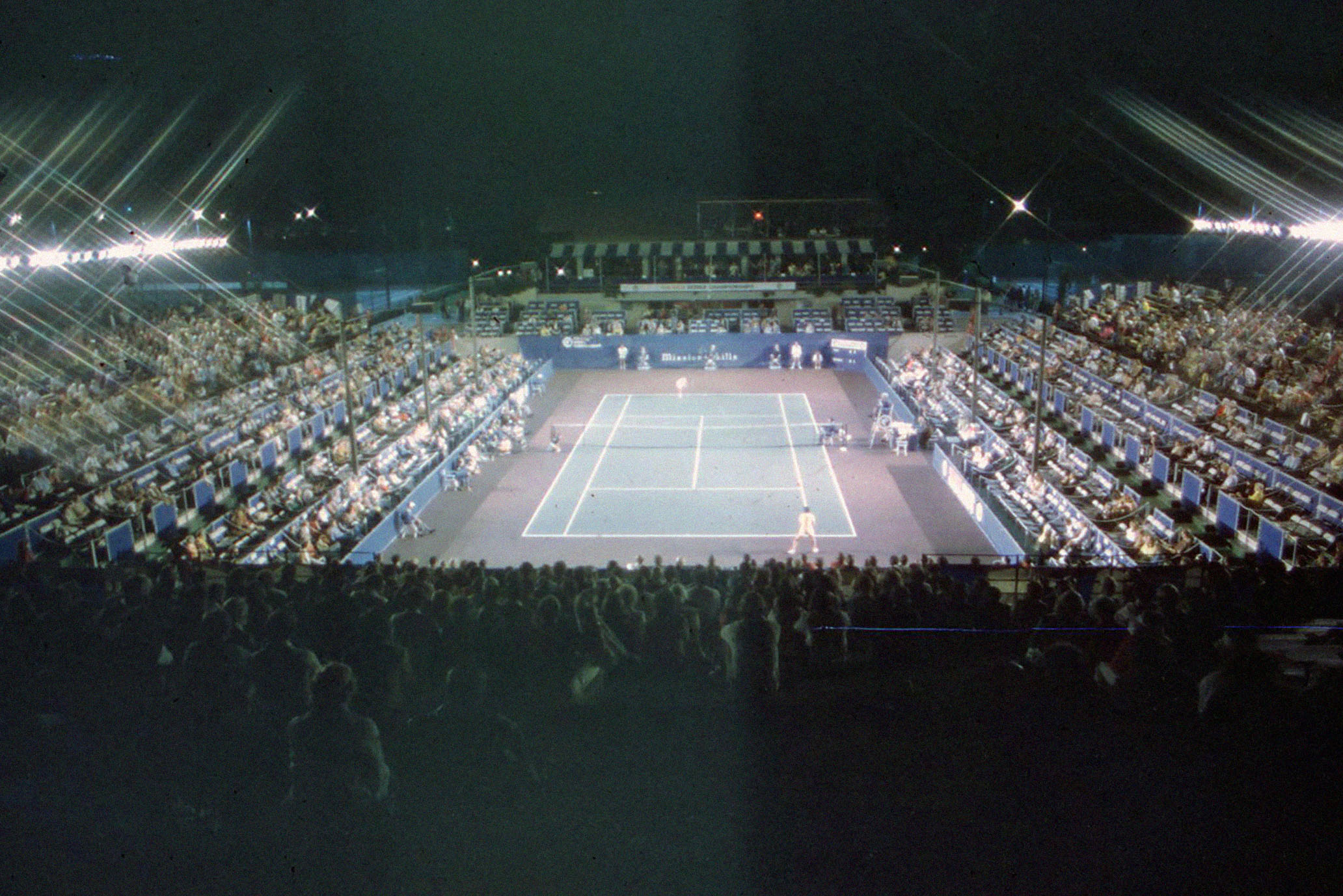
The American Airlines Tennis Games was held at the Mission Hills Country Club from 1976-1980, when the semi-finals and finals were rained out. // Source and date unknown

The American Airlines Tennis Games was held at the Mission Hills Country Club from 1976-1980, when the semi-finals and finals were rained out. // Source and date unknown
If you don’t tame nature, nature will tame you. Certainly, that’s the way it works in Southern California’s Coachella Valley. Marked by the desert’s distinct blend of austerity and beauty, this community also happens to house tennis’ near-Slam event, the BNP Paribas Open.
The year 2024 marks the tournament’s 25th at the Indian Wells Tennis Garden, home of a lush and tactile tennis feast highlighted by match courts of various sizes, now-tall trees, ample shade, comfortable lawn chairs, hundreds of television monitors, clothing boutiques, equipment vendors, beverages galore, and food selections that span from a sit-down meal at Nobu to a pretzel, joyfully scarfed while strolling and gazing at one practice court after another.
To best grasp how tennis eventually bloomed in the Southern California desert, one must break time into two eras: BTF and ATF. BTF stands for Before the Flood—a February 1980 disaster that forced the tournament to cease play at the semifinal stage. This was the moment when nature kicked the tournament’s ass and provided tennis’ powers-that-be with a rationale for relocating this event from California to Florida.
ATF—After the Flood—defines the period that began in 1981, when former U.S. No. 1 Charlie Pasarell resurrected the tournament and repeatedly tamed and reshaped nature in ways few dared imagine. Over the next 19 years, Pasarell envisioned and, aided by a nimble team, created three increasingly bigger venues—La Quinta Resort & Club from 1981 to ’86, the Hyatt Grand Champions from 1987 to ’99, and, since the year 2000, its current 54-acre spot.
This story largely confines itself to BTF, starring a pair of deserts nearly 400 miles apart. Fifty years ago, there arrived the American Airlines Tennis Games. Held in 1974 and ’75 in Tucson, this was an event owned not by an independent promoter but by the fledgling Association of Tennis Professionals (ATP).
SIGN UP — YOU'RE ONLY AS GOOD AS YOUR SECOND SERVE.
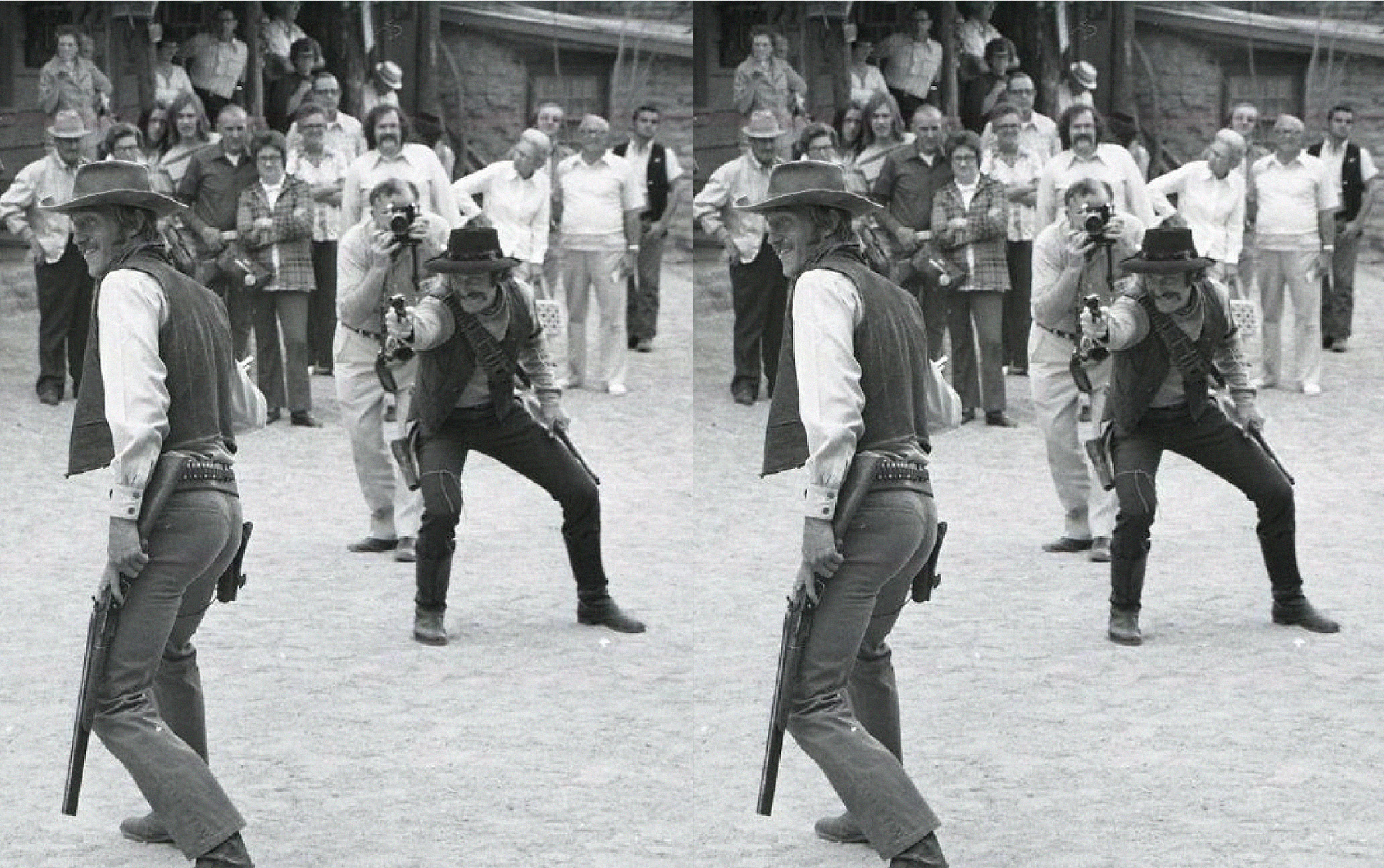
John Newcombe “guns down” Stan Smith during the first installment of the American Airlines Tennis Games—later the Indian Wells Masters—in Tucson, AZ, 1974. // Old Tucson Studios
Formed in 1972, the ATP in its early phase was strongly focused on player empowerment. The ATP’s 1973 boycott of Wimbledon was a game changer, conclusively making it clear that players would not be bossed around by administrators. Later that summer came the computer rankings, a performance-based way to enter tournaments that eliminated the invitational approach that had previously been the law of the land.
Ownership of several high-profile events would also help the ATP generate revenue. Year one in Tucson was fantastic. The entry list featured such greats as Rod Laver, Arthur Ashe, John Newcombe, and Stan Smith. The latter two at that point constituted a major rivalry, inspiring ATP PR man Richard Evans to create a compelling photo opportunity of the two mustachioed greats squaring off in cowboy regalia at a place right out of Hollywood’s vintage Westerns, Old Tucson. Lo and behold, Newcombe in the semis squeaked past Smith in a third-set tiebreaker worthy of High Noon and went on to beat Ashe in the finals. According to Evans, “right away there was a sense that this event was something big.” But after one more go in Tucson, the ATP opted to head west to the Palm Springs area.
In this specific desert, time is another factor; more pointedly, time, memory, and the evocative allure of the political leaders and entertainers whose names literally define the streets of this area some 120 miles east of Los Angeles. Gerald Ford Drive. Eisenhower Medical Center. Bandleader Fred Waring. Gene Autry, nicknamed “The Singing Cowboy.” Singer Dinah Shore. Comedian Bob Hope. And, of course, looming over all names and places, the Chairman of the Board, Frank Sinatra. This week, as the Sinatra song “Young at Heart” echoed through the lobby of one of the BNP Paribas Open’s official hotels, a woman turned to me and said, “You can’t go anywhere here without hearing him.” If the spirit of constant real estate development is always taking the Coachella Valley into the future, the retro pull of those names summons the past, cocooning residents and visitors alike in comfort and familiarity. As the years go on, will streets be renamed for more recent entertainment icons? Madonna Drive? Leonardo Lane? Robin Williams Boulevard?
Year-round sunshine and California’s seemingly inherent spirit of aspiration and status had long made the Coachella Valley a lively tennis community. For decades, Palm Springs’ most prominent tennis hotbed was The Racquet Club, a cozy, welcoming venue favored by actors, directors, producers, agents, and their many friends and associates in such burgeoning fields as real estate, entertainment law, and other business ventures. Back in the early ’60s, UCLA stars Ashe and Pasarell spent time at The Racquet Club playing hit-and-giggle tennis with various celebrities. One of Pasarell’s first partners who rapidly became a close friend was a woman then named Barbara Marx, in 1976 to become Barbara Sinatra.
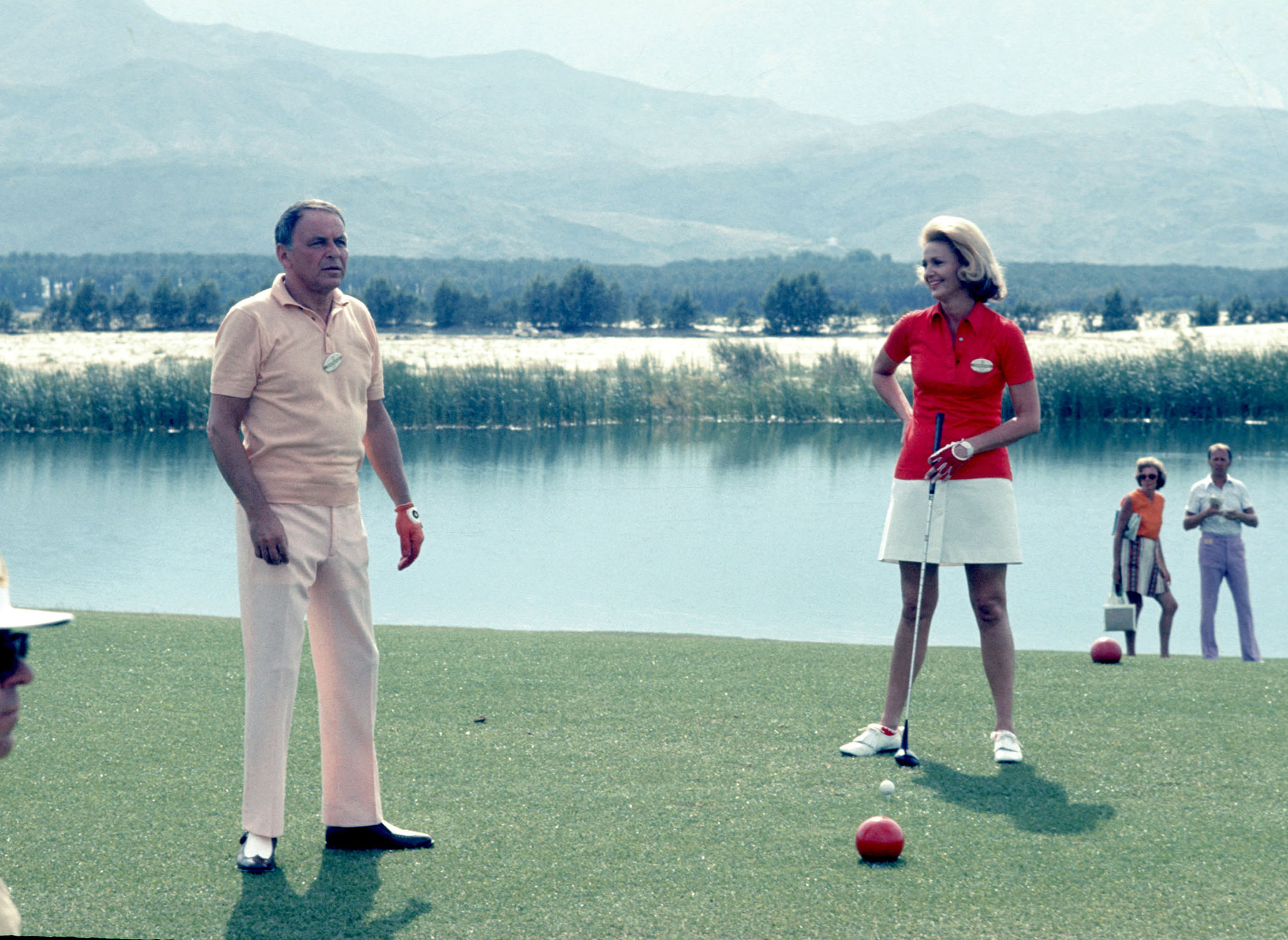
Frank Sinatra and Barbara Marx at the Dinah Shore Golf Classic, 1973 // Getty
That was the same year the tournament commenced its run in Rancho Mirage at Mission Hills Country Club. Known to all as “Mission Hills,” the venue had opened in 1971 and was purchased in 1974 by, of all corporations, Colgate-Palmolive. These were the years of the conglomerate, when even a company primarily known for its toothpaste perceived value in diversifying its holdings; not just into more packaged goods, but even into real estate and the newly emerging world of sports marketing. Colgate-Palmolive’s leader, David Foster, loved golf and tennis. The Colgate–Dinah Shore Winners Circle, held at Mission Hills, became a major LPGA stop. Foster purchased Bancroft, the racquet manufacturer that made the frames used by Billie Jean King and Björn Borg, featured King in Colgate ads, and also made Mission Hills the spot for the WTA Finals and the 1978 Davis Cup Challenge Round. An ATP event fit nicely into the portfolio.
Jimmy Connors, Laver, Borg, Newcombe, and Ashe were among the headliners that first year. Former U.S. No. 1 and recent Davis Cup captain Dennis Ralston had just come aboard as tennis director. A brilliant coach, Ralston proved a magnet, to the point where such top players as Roscoe Tanner, Tom Gorman, John Lloyd, Chrissie Evert, and many others all began to train at Mission Hills.
“The atmosphere and the tennis environment were incredible,” says Tommy Tucker. “So many of the best players in the world were here all the time.” Brought to Mission Hills by Ralston in 1977 to be the head pro, Tucker has been there ever since, engaged in everything from coaching tons of pros to conducting star-studded pro-ams and clinics to giving lessons to players of all ages and stages. “Tommy was always positive,” says Brian Gottfried, winner of the tournament in 1977 and a frequent participant in training sessions at Mission Hills. “He always had a smile and kept everything fun.”
But amid all the great competition and camaraderie, nature made its presence felt during those early years, most notably by numerous windstorms that could reach as high as 50 miles per hour, an intrusive factor accelerated by Mission Hills being smack in the path of 4,000 windmills located 15 miles to the northwest.
That was nothing compared to what happened in 1980. That February, floods came that drove thousands of people from their homes—a record 17-plus inches of rain. As a levee broke, streets turned into rivers. Six counties were declared disaster areas. Property damage exceeded hundreds of millions. The tournament got underway, but the conditions were becoming increasingly horrible. “We had sand in our eyes and our nose and our mouth,” says Tucker. Eventually, it was decided to stop play at the semifinal stage, a quartet of Americans—Connors, Gene Mayer, Brian Teacher, Peter Fleming—still in contention. “It just rained and rained,” says Teacher. “It was strange being in the desert and being rained out. You don’t expect that to happen, but it did.”
The tournament lost $80,000 that year. Though surely it would have generated a profit had it been able to finish, the ATP’s leaders were leaning strongly in the direction of completely ditching what they perceived strictly as a tiny town located in a desolate California desert. Florida would be much better. Call it an East Coast mentality.
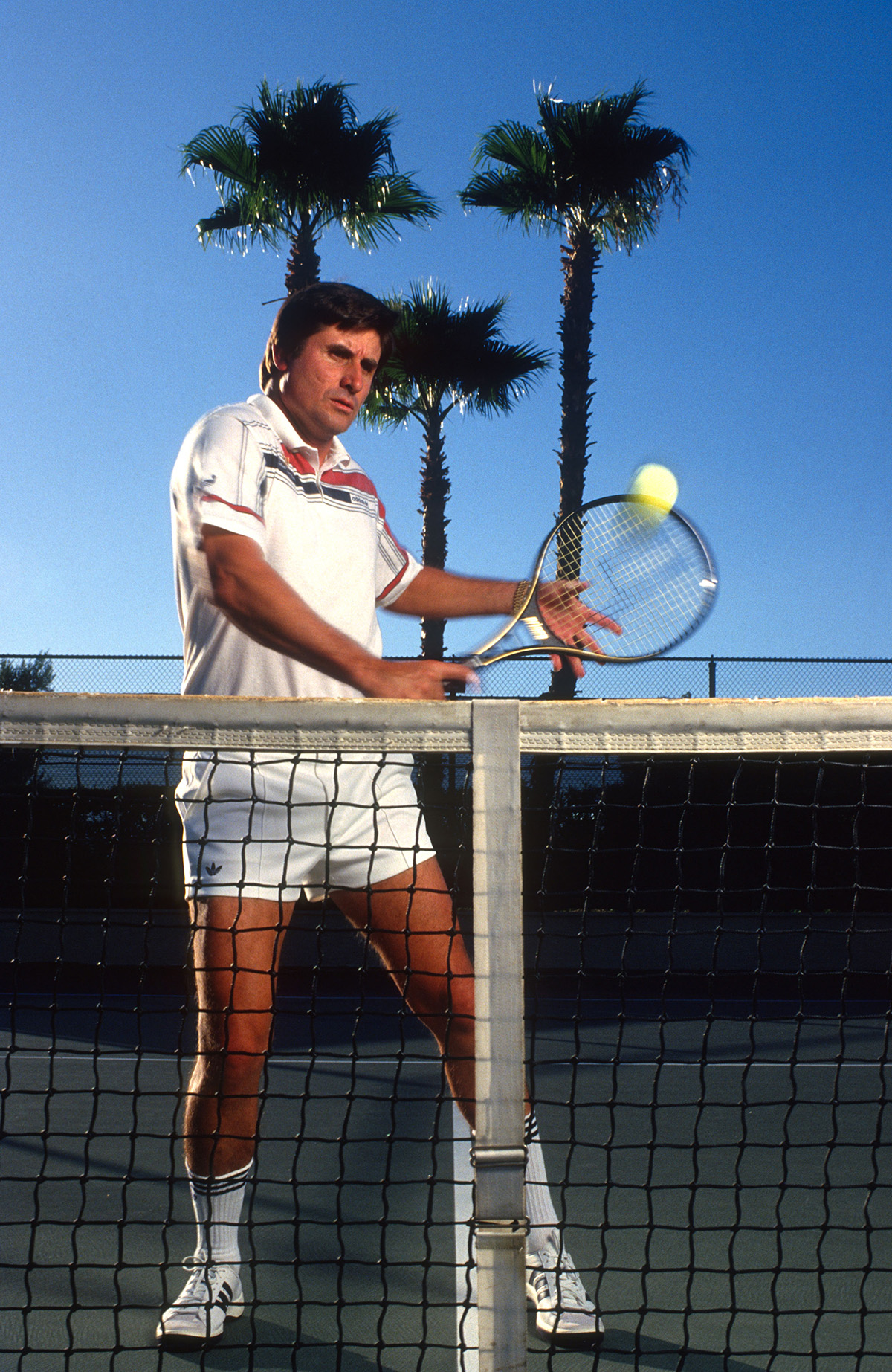
Charlie Pasarell brought the tournament to La Quinta Resort & Club in 1981 // Getty
But one ATP board member passionately disagreed. Pasarell had just started to work as head of tennis for Landmark Land Company, a firm that had purchased La Quinta Resort & Club in 1977. Arguing the area’s case to the ATP, Pasarell pointed out that Coachella Valley was located a swift two-hour drive from the country’s second-biggest city, Los Angeles. Millions more from all over California, Nevada, Arizona, and even the East Coast loved the chance to head to the desert for sun and fun.
And so Pasarell was granted the sanction to run the tournament at La Quinta—a mere 10 weeks prior to the start of the tournament. The ATF Era had begun. “There was no question in my mind that this area had all it took to support a first-rate tennis tournament,” said Pasarell. The three stadiums he built also validated another facet of desert life: If you don’t build it, they won’t come. Or perhaps there’s a better motto for the tournament. As Sinatra sang, “I’ve lived a life that’s full/I traveled each and every highway/And more, much more than this/I did it my way.”
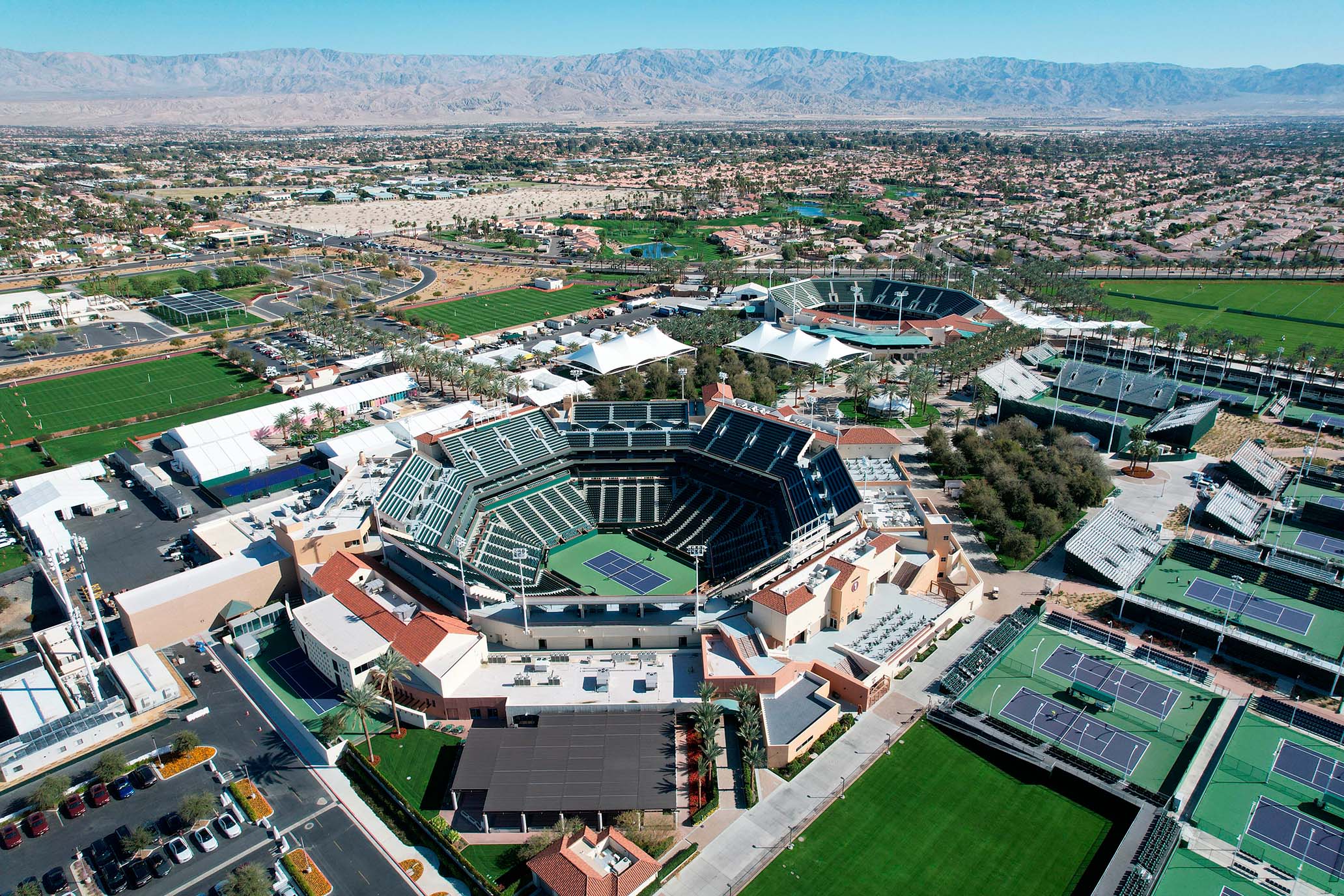
The Indian Wells Tennis Garden as we know it today: Tennis Paradise. // Associated Press
Joel Drucker has covered the BNP Paribas Open at three venues, starting with a day trip from Los Angeles to La Quinta in 1983.
